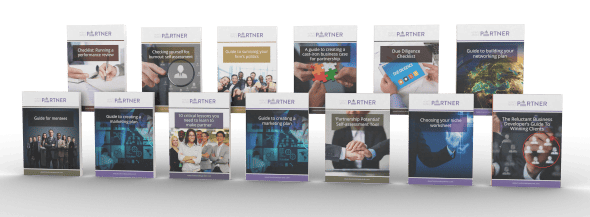“Big 4 vs Mid Tier. Which will be better for my career?” It’s a question that has taxed many graduates. A 7 years ago, I wrote about the differences between a Mid Tier Firm and a Big 4 firm. In this article, I revisit those thoughts and update them with what has changed in the intervening time.
Big 4 vs Mid Tier: Is there a difference?
 What’s the fuss? An accounting firm is an accounting firm, right? Wrong! The Big 4 (Deloitte, EY, KPMG, PwC) are very different beasts to even the national firms in the UK accountancy top 10-20. It’s more accurate to describe the Big 4 firms as multi-disciplinary consulting firms rather than an accounting firm. For example, all the Big 4 firms now have alongside the traditional department you would expect in a large accountancy firm, capabilities within law, consulting, IT, technology and much, much else. Within the Mid Tier, there is a large difference between working for a BDO or Grant Thornton and a top 10-20 firm. Since I wrote my original article, BDO and Grant Thornton have become Big 4-lite firms. Like the Big 4, they are building their consulting capability (on a much smaller scale) and have very structured talent management and career progression processes.
What’s the fuss? An accounting firm is an accounting firm, right? Wrong! The Big 4 (Deloitte, EY, KPMG, PwC) are very different beasts to even the national firms in the UK accountancy top 10-20. It’s more accurate to describe the Big 4 firms as multi-disciplinary consulting firms rather than an accounting firm. For example, all the Big 4 firms now have alongside the traditional department you would expect in a large accountancy firm, capabilities within law, consulting, IT, technology and much, much else. Within the Mid Tier, there is a large difference between working for a BDO or Grant Thornton and a top 10-20 firm. Since I wrote my original article, BDO and Grant Thornton have become Big 4-lite firms. Like the Big 4, they are building their consulting capability (on a much smaller scale) and have very structured talent management and career progression processes.
Don’t Big 4 firms have a broader range of specialisms and larger clients?
Five years ago I wrote this:
Whilst recent audit reforms mean that more Mid Tier firms get to audit FTSE 100 and FTSE 350 companies than before, it is fair to say that the Big 4 – EY, KPMG, Deloitte, and PwC, tend to work on clients at the top of the Mid Market through to the largest multinational and international firms. If you work for a Big 4 firm you can normally guarantee to work with the largest companies and richest private individuals. However, with PwC and KPMG recently introducing very competitively priced services and specialist units for small businesses, you may still find yourself working in a smaller market.
After the Sarbanes-Oxley Act in 2002, the Big 4 firms sold their large consultancy arms. Over the last five years or so, they have been rebuilding their consultancy practices by diversifying their offer, whilst retaining their traditional accountancy, tax and advisory services. After all, given the unprecedented access most of the Big 4 firms have to large businesses in the UK and globally, it makes sense to be able to offer a complementary consultancy service
These 10 lessons are taken from our experience of working with successful candidates to make partner. Can you afford not to read them?

Not any more: the marketplace has moved on.
Initially, the rapid rise of cloud-based accounting systems, such as Xero, enabled The Big 4, BDO and Grant Thornton to become an attractive proposition to SMEs – traditionally the market occupied by Mid Tier and small firms. However in the last few years we have seen the top 6 firms start to move away from servicing SMEs and back to their historical areas of strength, the Mid Market, large, national and international businesses.
Working for the Big 4 still means a bigger salary – right?
Five years ago, these were my thoughts on the salary difference between the Big 4 and the Mid Tier:
When I worked for BDO, a top 6 UK Accountancy practice, it was widely accepted that they could never compete with the salaries and packages offered by the Big 4 firms. If you are lucky enough to get a role in a Big 4 firm you can expect a ‘market-leading’ salary and benefits. Of course, you will be expected to work extremely hard to earn these. Read my post about what it really means to make partner.
When I wrote this article there was a massive shortage of accountancy talent. As a result there wasn’t such a big difference between the pay of the Big 4 and BDO/Grant Thornton. I am now updating this article in light of what has happened to the economy due to COVID-19. For the first time in nearly 10 years we are seeing it is now an employer rather than candidate driven jobs market place.
Big 4 vs Mid Tier – salaries not that different.
When I researched this topic on Glassdoor, I found that at trainee through to manager level (for audit in London) there was no meaningful difference in salaries between BDO, Grant Thornton and the Big 4 – EY, KPMG, Deloitte and PwC. Apart from trainees, the actual lowest salary figure quoted was a Big 4, not BDO or Grant Thornton.
- Trainee: £26 – 35k
- Senior: £39 – 46k
- Assistant Manager: £43 – 52k
- Manager: £55 – 71k
As soon as you go outside the top 6 firms, you will see a more discernible difference between salaries between the Mid Tier and the Big 4.
Over 40+ resources, as featured in How To Make Partner And Still Have A Life and Poised For Partnership to help you progress your career to partnership – and when you get there stay there. Find out more here

Does a Big 4 firm feel more corporate?
Two years ago I wrote:
Whilst the Big 4 are still Limited Liability Partnerships, they are much closer to a corporate than any of the Mid Tier firms, including those at the top of the Mid Tier – BDO, Grant Thornton (GT), or Baker Tilly. This means there are generally more established processes and systems within Big 4 firms than in the Mid Tier. In fact, some of the firms in the UK Mid Tier are currently spending huge amounts of time introducing a consistent way of working.
From what we are seeing with our clients from the top 10 UK firms, there now seems to be a similar level of rigour in how promotions are made from senior manager to director, and director through to fixed share partner. The top 6 firms all expect their senior managers to prepare a business case for director, as well as the more normal business case to go from director to partner.
The culture is very different
The culture at the Big 4 is very cut throat and management can be a little snotty. (See this discussion on FishBowl) For example EY, KPMG, PwC and Deloitte in the UK will fire a graduate who fails any of their exams. Whereas at BDO and Grant Thornton, they will allow their trainees a few failures before firing them. As BDO and Grant Thornton can’t compete on salaries with the Big 4, what you will find is that the management and culture at BDO and Grant Thornton is seen as more caring. You, typically, at the Mid Tier firms, will not be just a number and well-known to employees at all the different levels in your office or service line.
There are less resources and systemised processes
What you will find with the Big 4 is that most of the processes are highly streamlined and very systemised. The further you go down the ranks of the Mid-Tier firms, the less resources available and the less systemised processes will be. Of course this is a massive generalisation, but the Big 4 with BDO and Grant Thornton, are very well managed and run firms.
It’s not always the case, but having less resources in a Mid-Tier firm often translates into less training or poorer quality training, plus less IT equipment and slower response times from IT support.
There will be a greater learning curve if you trade down to the Mid-Tier from a Big 4 firm
At any graduate recruitment fair you will hear BDO and Grant Thornton talk about the fact you get earlier responsibility and more autonomy with them than if you went to a Big 4 firm. And this is not just a recruiters claim. It is actually true. Which means if you transfer from EY, KPMG, Deloitte or PwC to the Mid-Tier you will find you need to be more of a generalist and will have a steep learning curve – particularly as a junior member of the team.
In summary – what to know about Big 4 vs Mid Tier.
Many graduates will still want to start their accountancy career with a Big 4 firm. They are still great names to have on your CV, regardless of how long your stay. From what we are seeing, the gap between BDO, Grant Thornton and the Big 4 is lessening. If you opt for a top 6 firm you are likely to get more opportunities, challenges and benefits than if you opt for one of the other Mid Tier firms. What hasn’t changed, however, is that these additional opportunities and higher salaries are still likely to come with the cost of longer hours, more competition, and a greater personal sacrifice.
When you opt for a Big 4 firm, such as EY, Deloitte, PwC or KPMG, you generally know what you are getting into. Yes, there are always cultural differences between the Big 4 firms. But you have a good idea of what to expect. When you trade down to the Mid Tier, you really need to do your homework. Not just on the firm you are going to, but also the office and service line you are joining. There are massive differences between the Mid Tier firms, in terms of culture, resources and expectations. But these differences can also be within the firm – particularly between newly acquired parts of the firm, regional offices and the main part of the firm.
Listed below are links to more posts that will help you understand what you are getting into when you go for partner, and remember to download your free career kitbag, which is packed full of advice to help you progress your career.
Further Reading
Making Partner – what does it really mean?
The Pros and Cons of Making Partner.
How do I become a partner at a Big 4 firm?
What size portfolio will I need to build as a Big 4 partner?

Do you have a career plan guiding you to do the right things at the right time? Find out how ready you really are to make partner.








